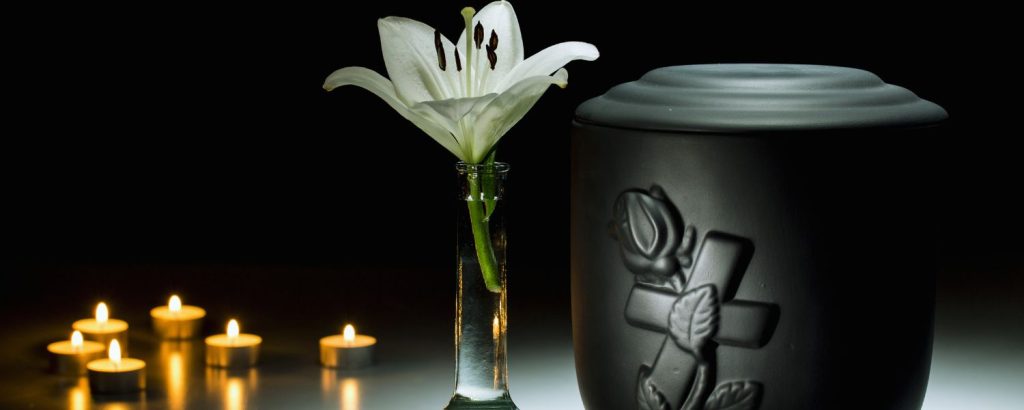
When a loved one passes away, it’s natural to want to understand the options available for their final arrangements. One increasingly common choice is cremation. In this guide, we’ll walk through the process of cremation in simple terms, covering what it entails and how you can memorialise your loved one afterwards. This information is brought to you by Swanborough Funerals, who aim to provide compassionate and informative support during difficult times.
A Simple Explanation of Cremations

Cremation is a funeral process that involves reducing a deceased person’s body to ashes through a carefully controlled heat and flame process. It’s an alternative to traditional burial services and has become popular for various reasons, which we’ll explore later.
What Are the Steps Involved in a Cremation?

The steps involved in a cremation can vary slightly depending on local regulations and cultural customs, but generally, the process follows a similar sequence. Here are the key steps:
1. Preparation of the Deceased
This step ensures that all legal requirements are met and necessary paperwork is completed. Once this is done, the body is prepared for cremation. This may include bathing, dressing, and placing the deceased in a cremation container, which is typically made of wood or cardboard.
2. Transfer to the Crematorium
The deceased, within the confines of the cremation container, is conveyed to the crematorium, where preparations for the commencement of the cremation process are undertaken.
3. Identification and Documentation
Before the cremation begins, the deceased is identified, and all relevant documentation is checked to ensure accuracy. This step helps prevent errors or misunderstandings throughout the process.
4. Placement in the Cremation Chamber
Once the necessary preparations are complete, the body is placed in the cremation chamber. The chamber is a specially designed furnace that is heated to a high temperature, typically between 760 and 982 degrees Celsius.
5. Cremation Process
Within the cremation chamber, the body is subjected to high temperatures and flames. This Funeral process, known as combustion or incineration, breaks down the body’s organic matter, leaving behind bone fragments and ashes. The duration of the cremation process can vary but generally takes approximately two to three hours.
6. Cooling Period
Following the cremation process, the residual bone fragments undergo a cooling period before they are further processed. This cooling period ensures that the bone fragments can be handled safely.
7. Processing of Ashes
After cooling down, the bone fragments undergo a meticulous processing procedure to transform them into a delicate powder, commonly referred to as cremated remains or ashes. Any metal implants or prosthetics that were not consumed during the cremation process are removed at this stage.
8. Placement in an Urn
The ashes are then placed in an urn, which the family typically selects. The urn serves as a container for the ashes and may be personalised or decorated according to the family’s preferences.
9. Return to the Family
The urn containing the ashes is returned to the family. Depending on their wishes, they may choose to keep the urn at home, bury it, place it in a columbarium, or scatter the ashes in a meaningful location.
How Do You Memorialise a Loved One After Cremation?

Memorialising a loved one after cremation involves creating lasting tributes and honouring their memory meaningfully. Here are some common methods for memorialisation:
1. Urns
Many families choose to keep the ashes of their loved ones in an urn. Urns come in various styles and materials, allowing families to select one that reflects the deceased’s personality and preferences. They can be displayed at home, in a columbarium, or buried in a cemetery.
2. Scattering
Certain families choose to disperse the ashes of their loved ones in a place that held special meaning either to the deceased or to their family. This could be a favourite outdoor spot, such as a park, beach, forest, or somewhere with sentimental value, like a family vacation spot.
3. Memorial Jewellery
Ashes can be incorporated into jewellery, such as pendants, rings, or bracelets, allowing family members to keep their loved ones close to their hearts. Personalised memorial jewellery serves as a tangible reminder of the individual who has passed away.
4. Memorial Gardens
Some cemeteries and crematoriums have memorial gardens or scattering areas specifically designated for cremated remains. These spaces provide families with a peaceful environment where they can visit and fondly remember their loved ones.
5. Keepsakes and Artwork
Ashes can create unique keepsakes or artwork, such as glass sculptures, paintings, or tattoos. These personalised creations are tangible reminders of the person who has passed away and can comfort grieving family members.
When Will Cremation Take Place?

The timing of a cremation can vary depending on various factors, including local regulations, religious customs, and the availability of crematorium facilities. In some cases, cremation may occur shortly after death, while in others, it may be delayed to accommodate funeral arrangements or family preferences.
The Cremation Process: How Is a Body Cremated?

The cremation process is a methodical and respectful way of handling a deceased individual’s remains. It involves several key steps and considerations. Let’s explore the benefits of cremation services.
Benefits of Cremation Services:
1. Cost-Effective
Cremation is often more affordable than traditional burial services, as it eliminates the need for a casket, embalming, and cemetery costs.
2. Environmentally Friendly
Cremation has a minor environmental impact compared to traditional burial, as it does not involve embalming fluids or land for burial plots.
3. Flexibility
Cremation offers more flexibility in memorialisation options, allowing families to choose a method that best honours the memory of their loved one.
4. Space Saving
Cremation does not require a large burial plot, making it a suitable option for areas where land availability is limited.
5. Personalisation
Cremation allows for greater personalisation in memorial services, as families can choose how to memorialise their loved ones in a way that reflects their unique lives and personalities.
Conclusion
In conclusion, understanding the process of cremation can help you make informed decisions about end-of-life arrangements for yourself or your loved ones. While it may seem daunting, cremation offers many benefits, including flexibility in memorialisation options and environmental considerations. No matter whether you opt for cremation or traditional burial services, Swanborough Funerals is dedicated to being there for you throughout the entire journey.
 "/>
"/>
